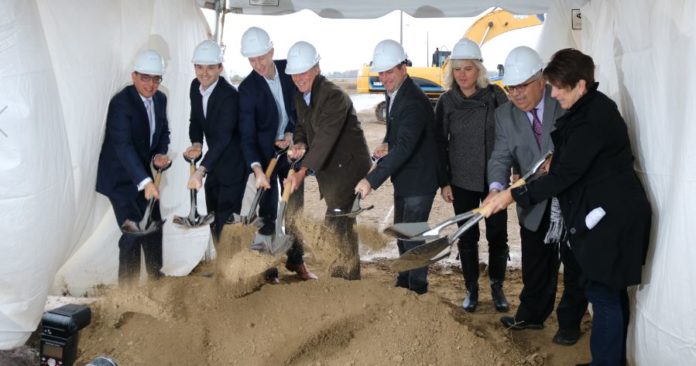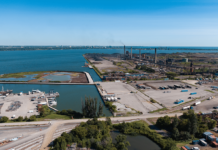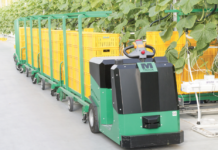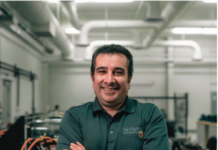
“Hamilton International Airport is critical to our city’s ambitions to be a global logistics hub and a diversified economic powerhouse” – Glen Norton, Director of Economic Development at the City of Hamilton
Hamilton International Airport is both Canada’s fastest-growing and largest overnight express cargo airport and is poised to take off even higher with growing passenger and cargo volumes, investments in infrastructure, groundbreakings on new employment lands ventures, and expansion of a maintenance and repair facility that will fuel next-generation growth at the airport.
“Hamilton International Airport is critical to our city’s ambitions to be a global logistics hub and a diversified economic powerhouse,” said Glen Norton, director of economic development at the City of Hamilton. “The investment in and around the airport and growth in passenger and cargo volumes speaks to the unique value proposition HIA offers to travellers and businesses.”
Cargo traffic grew 20 per cent between 2016 and 2018 to 525,161 kilograms, thanks to 24/7 unrestricted airfield access and growth in service hubs for Cargojet, UPS, DHL and Canada Post/Purolator.
DHL has just announced plans for a $100-million expansion at HIA that will quadruple its footprint to 200,000 square feet and add automated sorting technology that will process 15,000 packages per hour. The global cargo carrier employs 225 at the Hamilton airport.
Passenger traffic at YHM soared 118 per cent between 2016 and 2018, climbing to 725,630. Passenger volume has grown another 30 per cent year over year in 2019, says HIA CEO Cathie Puckering, thanks largely to the benefits of Hamilton’s efficient size and convenient experience for passengers and carriers, and growth in service by low-cost carriers Flair and Swoop.
“Our carrier partners need us to make quick turnarounds because they only make money when their planes are in the air. So we work to get their planes to the gate, unloaded, refuelled, restocked and reloaded as quickly as possible. Minutes matter for them.”
Airport operators TradePort International is also investing almost $40 million in a four-year modernization project that will upgrade runways, taxiways, lighting and instrumentation to boost efficiency, reliability and safety and allow for the increasing use of wide-body aircraft for domestic and long-haul traffic.
“This will allow us to be ready for the growth we know is coming,” said Puckering.
KF Aerospace and Mohawk College
KF Aerospace, which provides aviation services for corporate, commercial and military customers worldwide, has had to turn away work because of limitations to physical space and an international shortage of skilled labour.
Its investment in Hamilton will go a long way to answering both challenges, says Grant Stevens, vice-president of corporate services.
The first phase of KFA’s expansion at HIA is a 100,000-square-foot hangar to repair, modify and convert wide-body aircraft, such as 767s, 777s and 787s.
Opening Nov. 18, it will be the largest hangar in the KFA network, says Stevens.
When KFA began its construction project, it employed about 145 people in Hamilton on two maintenance/repair and modification lines. The company projects to employ about 425 in three years on six lines and has already hired 60 new employees, says Stevens.
The company has been located in Hamilton for almost 25 years and chose HIA for this facility because of the support from the airport, good runways and 24- hour access.
“There is value in bringing this work to Canada. We anticipate work from across Canada, Iceland and Germany and the eastern seaboard of the United States.”
Now under construction is a 60,000-square-foot hangar that will also accommodate labs and classrooms for Mohawk College aviation students beginning in fall 2020.
“These new world-class facilities will give students in the aviation structures, maintenance and avionics programs the kind of hands-on, real-world learning that few other colleges will be able to match,” said David Santi, Dean of Engineering Technology.
The HIA campus will allow Mohawk to eventually double its program enrolment from 150 to 300. There are currently three jobs for every graduate, he says.
“This is another example of Mohawk’s consistent and proactive response to the needs of industry,” said Norton. “This partnership with KFA will create a highly skilled talent pipeline so critical to the booming aerospace sector.”
The vision is to coalesce Hamilton’s aerospace assets – including the airport, the Warplane Heritage Museum, Mohawk, materials research at McMaster and advanced manufacturing – into a hub of excellence that will draw investment and talent, says Santi.
Panattoni Developments
Panattoni Developments has broken ground on a 265,000-square-foot industrial building in the Airport Employment Growth District, the first phase of its plans for a series of developments in Hamilton. The hope is to have the building open in early summer 2020.
Its next project at the AEGD will be almost triple the size and will be targeted to large-scale logistics operations.
Panattoni, which develops large-scale commercial and industrial projects around the world, owns 82 acres in the AEGD and will soon close a deal to buy another 88 acres, says development manager Adam Lambros.
Together with a third property, Panattoni has enough real estate in Hamilton to develop more than three million square feet, says Lambros.
“We really like the market in Hamilton because of the labour pool, the connectivity to the larger region and the Panattoni ground breaking access to the airport.”
To learn more about Canada’s fastest growing airport please visit Invest in Hamilton or John C. Munro Hamilton International Airport.















